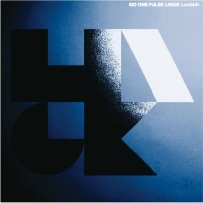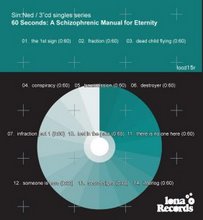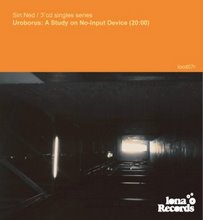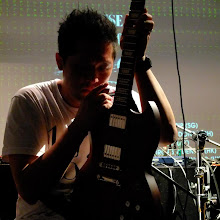Two Nice reviews from Heathen Harvest:
Sin:Ned / Nerve - Ghost Feeding Vessel
This is a split release between Sin:Ned and Nerve.
This split album from Hong Kong locals Sin:Ned and Nerve is a recorded performance on the eve of the Chinese Ghost Festival as accompaniment to a multimedia installation of video projection by two other artists at the Para/Site Art Space. It is a spatially haunting piece endemic to both region and intention – discernibly Asian and noticeably supernal.
The quality of the single track that sheds skin and phantasmagoria over a little less than forty minutes is to be commended for a live recording, the electronics so pristine they finely shave away all low-fi or hazed excesses yet despite the digital crystallisation is not frigid.
Intended to serve as a bridge those in this world and those in the next, ‘Ghost Feeding Vessel’ is thankfully not a dolorous drone of decay and depression for it is far too electric and chaotic. Bell chimes limn the air like the fragrance of jasmine, delicate and almost imperceptible; flutes flit and dart in Asian scale tones down to their quarters as swift as the smallest of winged birds; gongs explode showers of golden dust; even the more electronic oscillating susurrations are treated with a light deftness and inveigle the senses. Sounds coalesce and crescendo in attempt to force embrasure.
Several movements collate ‘Ghost Feeding Vessel’ with the middle section less ghostly than the lead-in as electronic glitches patter little rhythms with the sampled noise of dust. The last movement, however, seems to step away from the realms of spirits and becomes mired in an urban maelstrom of squalling frequencies and rapid and uncontrolled leaps of percussion. This detraction seems to close more than open the aperture into the formless.
The album is a limited affair, one-hundred CDr copies are presented better than the average slap-together, with a black silk-screen coated disc (quite a rarity for a CDr) and heavy gloss card in full colour. An intriguing symmetrical icon burns an optical illusion with lens flare that has your pupils dilating. (symbolique)
http://www.HeathenHarvest.com/article.php?story=20090209184057101
No One Pulse - LINGK
The Hong Kong duo of Wong Chung-fai (Sin:ned, Music Colony Bi-Weekly Magazine) and Chau Kin-wai (Sleepatwork) recording as No One Pulse, specialise in conceptually minimalistic, but broadly-painted, soundscapes, utilising electronic blips, hums and squeaks. In their own terms these are micro-sound experiments and “freeform” electronics, collated and built from both studio-based and live recordings. There are hints of a certain formalism to some of the microstructural minutiae of the compositions, but above and beyond that the pair introduce elements of random interpolations and chaotic improvisation. This is not to imply any Stockhausen-style atonality is present – rather, in much the same way that matter behaves in the real world, structures are allowed to emerge out of the randomicity without attempting to confine the music into any theoretical straitjacket. What we have then could be said to mimic the natural processes, albeit on a smaller scale, that form the bedrock of material existence around us.
I have to advise that I use the word minimal very loosely here – the sounds employed are in essence very few in number, but stack themselves up in successive layers to produce a convoluted complexity. Random concatenations, microscopic detonations and explosions, sheets of accelerated particles, high-energy sonic excitations, and hums, clicks and squeals – these are the fundamental particles that surge and flow, that collide and split, and form the basis of No One Pulse’s musical discourse. It’s never loud or harsh, although sometimes the drones and squeals have a habit of drilling into the head, just like some neutrino ploughing through miles of rock.
Indeed, the sounds on here remind me very much of the ‘music of the spheres’, created through both macro and micro-scale processes, picked up and recorded by radio astronomers – the constant flux of creation caught in spectral sound. It’s like the pair have journeyed through the heart of star-fields and galactic nurseries, sailed into vast dust-clouds of energetic radioactivity or flown past extra-solar planetary systems, all the while pointing sensitive antennae at them and recorded the fluttering, the whistling, the crackling, the humming and the heartbeats of black holes and galaxies hidden in the airlessness of space. And in between the interstices of sound there is space, eternal light-years of hyperactive nothingness, bristling with unseen and unfelt energies. Above all one gets the impression, the certain feeling in fact, of vast limitless expanses, where the stars and galaxies are on the same scale to the universe as atoms and subatomic particles are to our human comprehension. Little islands of coagulated matter clump together here and there, accreting and spinning, before amassing sufficient to form new systems and worlds.
Simultaneously, one can also envisage a journey through the particle-rich quantum world, which in its own way can be considered as just another universe itself, albeit compacted into an infinitesimally small space, but still an analogue of the bigger one. Therefore I wouldn’t be surprised, should we develop sensitive enough instruments, that we detect a similar subatomic symphony, equally as energetic and equally as noisy. And No One Pulse’s entirely naturalistic soundtrack can just be as fittingly applied to that scale as it can to its opposite. In that sense, it’s truly a work that encompasses the entire spectrum of creation in its scope.
It would be true to say, then, that experimental music has not only a global reach, but in this particular case can actually encompass whole worlds, from the small to the galactic. LINGK contains it all, condensing the whole spectrum into a palatable form, while simultaneously moulding it into a work of abstract beauty. The near-lightspeed blasts of particles no human eye could possibly ever see, the lightyears-long tendrils of starstuff left over from supernovae or the massive columns of gas and dust serving as the wombs of new stars; who would have thought that you could have shoehorned that lot onto a disc of plastic only 5” in diameter. (S:M:J63)
http://www.HeathenHarvest.com/article.php?story=20081010074849412
Subscribe to:
Post Comments (Atom)











No comments:
Post a Comment